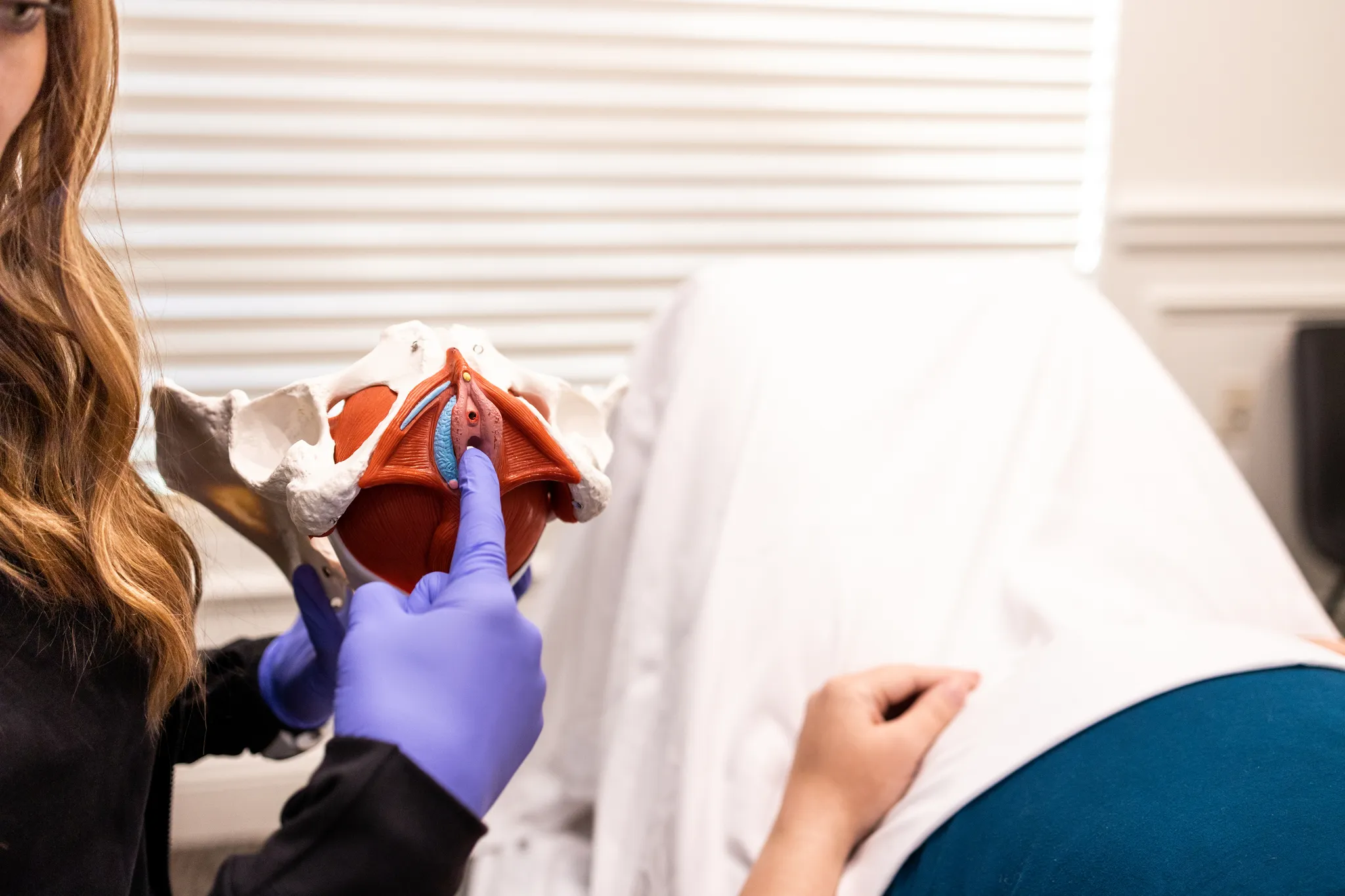Birth Prep Program in Utah
Our pelvic floor physical therapists are able to address many issues related to pregnancy and pre-birth. Our staff are expertly trained pelvic floor physical therapists who spend many, many hours studying the pelvic floor and how it interacts with the rest of the body. They are musculoskeletal experts and can address your pelvic floor’s role in pregnancy and childbirth as well as any potential issues. We will examine your posture, breathing, and patterns of activity. Then, we can create individualized treatment plans and recommend birthing strategies.

Our Birth Prep Program in Lehi, Layton, and Other Areas in Utah
Baseline screening
-
- Are there any pelvic floor issues or tendencies you are experiencing that could cause problems during pregnancy or after birth?
- How strong is your muscle power? What areas can you train now to help with a specific issue?
- What has your pregnancy been like? Are you looking for referrals to other doctors?
- How does your day look? What habits can you make or break (sleep quality, activity level, diet, etc.)?
- What are your goals for the future?
Posture education
-
- While posture does not need to be perfect every time, it is common for pregnant women to experience an arching back and a flared rib cage as the baby grows. This can lead to back pain and rib pain, difficulty breathing as well as pelvic girdle pain and abdominal weakness.
Motor control for the Pelvic Floor
-
- This is the core of pelvic floor physical therapy. To allow the baby to pass through the vaginal canal during birth, the pelvic floor muscles should be stretched 3-4 times their normal length. It is important to assess and prepare these muscles!
- Is your pelvic floor strong? Are you feeling it tight? Are you prone to clench all the time – but not knowing it? Do you prefer to “bear down” rather than squeeze or lift?
- We want to find a balance between strength and relaxation, just like you would do a bicep curl but also lose weight.
Perineal Massage
-
- Perineal massage can begin at 34 weeks. It helps to stretch the perineum and gives the sensation that baby is passing through the vagina. It may also reduce the pain of childbirth.
- You can also learn how to do a perineal massage by yourself or with a partner. Also, how to breathe when it’s baby time.
Preparing for labor and delivery
-
- The benefit of learning positioning with a pelvic floor physical therapist is that they can take into account any previous injuries or pain so you can make the best recommendations for labor and delivery. Some people may feel more comfortable sitting, squatting, sidelying or on their back during labor.
- Make sure you have a list of things that will help you feel more relaxed during labor and delivery. You will find that it is easier to practice and less difficult to think about labor.
Pushing strategies
-
- The difference between pushing strategies and tearing can be significant.
- Each has its pros and cons and should be included in your toolkit but it all comes back to pelvic floor motor controls.
Core activation
-
- It can become more difficult to use and feel these muscles as the baby grows. While this is natural and normal, there are still ways we can make it easier.
- Have you heard of diastasis recti? It’s a common condition in pregnant women at the end of their third trimester. It is possible to recognize it and manage intra-abdominal pressure changes due to lifting, impact, squatting, and other activities. This will help you to recover faster.
- Have you ever really taught your core? Our specialists can help!
Exercise plans
-
- Exercise during pregnancy can have wonderful benefits for the baby and mom and is completely safe for most women.
- You can consult one of our therapists if you have questions about how to begin, continue, or modify your exercise program during pregnancy.
- Our team will give you cues to make exercises more effective and help you modify exercises for symptoms.


